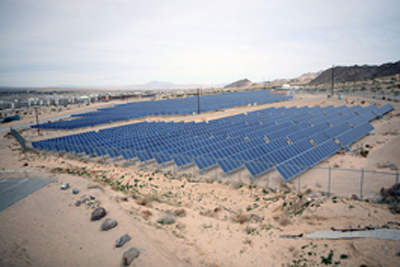An array of solar photovoltaic panels supplies electricity for use at Marine Corps Air Ground Combat Center in Twentynine Palms, California

Source: U.S. Marine Corps photo by Pfc. Jeremiah Handeland/Released (public domain)
Solar energy does not produce air or water pollution or greenhouse gases. However, using solar energy may have some indirect negative impacts on the environment. For example, some toxic materials and chemicals are used to make the photovoltaic (PV) cells that convert sunlight into electricity. Some solar thermal systems use potentially hazardous fluids to transfer heat. U.S. environmental laws regulate the use and disposal of these types of materials.
As with any type of power plant, large solar power plants can affect the environment near their locations. Clearing land for construction and the placement of the power plant may have long-term affects on habitat areas for native plants and animals. Some solar power plants may require water for cleaning solar collectors and concentrators or for cooling turbine generators. Using large volumes of ground water or surface water in some arid locations may affect the ecosystems that depend on these water resources. In addition, the beam of sunlight a solar power tower creates can kill birds and insects that fly into the beam.



